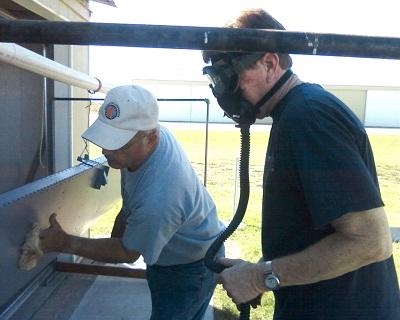Tue, Nov 03, 2015
Building Your Own Aircraft Can Be Challenging And Rewarding, But You Need To Understand The 51% Rule Before Starting
To get an amateur built aircraft approved by the FAA, the regulations require you build the “major portion” of the aircraft. This is what is commonly referred to as the “51% rule.” Complying with this rule can become complicated but let’s take a brief look at the intent of the rule.

When the FAA came up with the regulations for issuing airworthiness certificates to amateur-built aircraft they based their approval on the presumption that builders constructed their aircraft, “solely for their own education or recreation.” In other words, building your own aircraft has to be based on being a hobby, not a profession.
If you’re thinking about building a kit-produced aircraft, the kit manufacturer has the option to have their kit be evaluated by the FAA and listed as an approved 51% kit. This is a great service to the homebuilder. However, manufacturers are not required to do this. If the kit manufacturer is not listed on the FAA 51% list, it does not necessarily mean that the kit does not qualify. Ultimately, it’s up to the builder to prove to the FAA that they are in compliance with the majority-portion rule.
Things can get a little wormy if you’re buying a partially completed project from someone else or if any components of the project come from an FAA type-certificated aircraft. In situations like these, it’s important to get advice prior to getting involved. Another area to watch out for is hiring professional help to complete the project. This can be done, but once again, the devil’s in the details.
Here’s a very important detail that applies if you are purchasing a project in progress from someone else. It’s important to get as much background information as possible to show that the airplane was in compliance with the 51% rule at the time you took over the project. There is no requirement that the person who is getting the aircraft certificated has to meet the 51% rule; there simply must be reasonable documentation to show that the aircraft complies no matter how many builders were involved.
It’s almost impossible to impress the importance of understanding how the system works before getting involved in aircraft home building. Sometimes taking quick action on a “good deal” can turn into a nightmare. EAA and the FAA have a good working relationship to help keep aircraft home building legal and safe. Resources are out there for learning the rules of aircraft homebuilding; be sure to use them.
(Image of EAA chapter 1046 airplane painting project)
More News
Ground Stop (GS) The GS is a process that requires aircraft that meet a specific criteria to remain on the ground. The criteria may be airport specific, airspace specific, or equip>[...]
Aero Linx: Australian Transport Safety Bureau (ATSB) The Australian Transport Safety Bureau (ATSB) improves safety and public confidence in aviation, marine and rail transport thro>[...]
“The Palo Alto stopover confirmed—yet again—that flight schools and aero-clubs are no longer just curious about electric training; they are ready to buy. In just >[...]
Pilot’s Failure To Maintain Clearance From The Water While Flying At A Low Altitude Analysis: The flight of two airplanes was in cruise flight on a north heading about 50 ft >[...]
Also: 48th Annual Air Race Classic, Hot Air Balloon Fire, FAA v Banning 100LL, Complete Remote Pilot The news Piper PA-18 Super Cub owners have been waiting for has finally arrived>[...]
 ANN's Daily Aero-Term (06.30.25): Ground Stop (GS)
ANN's Daily Aero-Term (06.30.25): Ground Stop (GS) ANN's Daily Aero-Linx (06.30.25)
ANN's Daily Aero-Linx (06.30.25) Aero-News: Quote of the Day (06.30.25)
Aero-News: Quote of the Day (06.30.25) NTSB Final Report: ICON A5
NTSB Final Report: ICON A5 Airborne Affordable Flyers 06.26.25: PA18 Upgrades, Delta Force, Rhinebeck
Airborne Affordable Flyers 06.26.25: PA18 Upgrades, Delta Force, Rhinebeck



